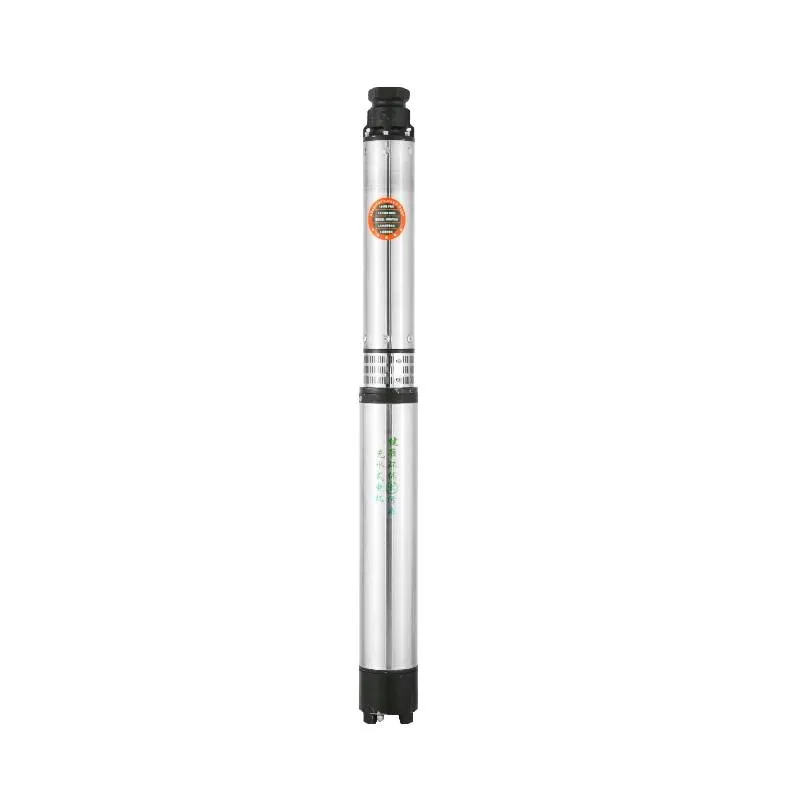Nov . 10, 2024 15:20 Back to list
Guidelines for Efficient Repair of Submersible Pumps and Maintenance Best Practices
Submersible Pump Repair A Comprehensive Guide
Submersible pumps are vital components in various industries, including agriculture, municipal water systems, and even residential settings. Operated underwater, these pumps are designed to move fluids by converting rotational energy into hydraulic energy. However, like any mechanical equipment, submersible pumps can experience wear and tear, leading to the need for repairs. Understanding the common issues associated with submersible pumps and the steps involved in the repair process can help ensure optimal performance and longevity.
Common Issues with Submersible Pumps
1. Overheating Submersible pumps are designed to operate underwater, but prolonged operation in low water levels can lead to overheating. This is often caused by inadequate cooling, which can damage the motor and other internal components.
2. Clogging Pump impellers can become clogged with debris, sediment, or corrosive materials, hindering performance. Clogs can lead to reduced flow rates and increased energy consumption.
3. Seal Failure Submersible pumps are equipped with seals to prevent water from entering the motor. Over time, seals can wear out due to exposure to harsh conditions, resulting in leaks and potential motor damage.
4. Worn Bearings Bearings support the motor and impeller. When bearings wear down, they can lead to vibrations, noise, and decreased efficiency, ultimately causing further damage to the pump.
5. Electrical Issues Electrical components, such as capacitors and wiring, can also fail due to corrosion or thermal stress. This can result in intermittent operation or complete failure.
Steps for Repairing Submersible Pumps
If a submersible pump requires repair, it is crucial to follow a systematic approach to ensure effective and safe restoration. Here is a step-by-step guide
submersible pump repairing

1. Safety First Always disconnect the power supply and follow safety protocols before beginning any repair work. Water and electricity can be a dangerous combination.
2. Inspection Thoroughly inspect the pump to identify potential issues. Check for signs of wear on seals, bearings, and electrical components. Look for debris or sediment accumulation that could indicate a clog.
3. Disassembly Carefully disassemble the pump to access its internal components. Take note of the order and direction of parts as they are removed, and keep track of any screws or fasteners.
4. Cleaning Clean all components to remove dirt, grease, or corrosive substances. A soft brush or cloth can be employed for debris, while specialized cleaners may be necessary for tougher stains.
5. Replacement of Worn Parts Identify any components that are damaged or excessively worn. Replace seals, bearings, and any electrical parts as needed. It is essential to use manufacturer-recommended replacement parts to ensure compatibility and performance.
6. Reassembly Once repairs are completed and all parts are cleaned or replaced, carefully reassemble the pump in the reverse order of disassembly. Double-check for any misaligned or missing components.
7. Testing Before placing the pump back into service, conduct a test run. Ensure that it operates smoothly without vibrations or unusual noises. Check for leaks around the seals and ensure that the flow rates meet expectations.
8. Regular Maintenance To prolong the life of a submersible pump, establish a regular maintenance schedule. This includes routine inspections, cleaning, and timely addressing any minor issues to prevent major repairs down the line.
Conclusion
Repairing a submersible pump requires attention to detail and a solid understanding of its mechanics. By recognizing common issues and following systematic repair steps, pump operators can minimize downtime and ensure reliable performance. Regular maintenance is paramount in preventing future failures and optimizing efficiency. Whether you are managing pumps in an industrial setting or maintaining one at home, proper care and timely repairs will extend the life of your submersible pump significantly.
-
Submersible Water Pump: The Efficient 'Power Pioneer' of the Underwater World
NewsJul.01,2025
-
Submersible Pond Pump: The Hidden Guardian of Water Landscape Ecology
NewsJul.01,2025
-
Stainless Well Pump: A Reliable and Durable Pumping Main Force
NewsJul.01,2025
-
Stainless Steel Submersible Pump: An Efficient and Versatile Tool for Underwater Operations
NewsJul.01,2025
-
Deep Well Submersible Pump: An Efficient 'Sucker' of Groundwater Sources
NewsJul.01,2025
-
Deep Water Well Pump: An Efficient 'Sucker' of Groundwater Sources
NewsJul.01,2025
-
 Submersible Water Pump: The Efficient 'Power Pioneer' of the Underwater WorldIn the field of hydraulic equipment, the Submersible Water Pump has become the core equipment for underwater operations and water resource transportation due to its unique design and excellent performance.Detail
Submersible Water Pump: The Efficient 'Power Pioneer' of the Underwater WorldIn the field of hydraulic equipment, the Submersible Water Pump has become the core equipment for underwater operations and water resource transportation due to its unique design and excellent performance.Detail -
 Submersible Pond Pump: The Hidden Guardian of Water Landscape EcologyIn courtyard landscapes, ecological ponds, and even small-scale water conservancy projects, there is a silent yet indispensable equipment - the Submersible Pond Pump.Detail
Submersible Pond Pump: The Hidden Guardian of Water Landscape EcologyIn courtyard landscapes, ecological ponds, and even small-scale water conservancy projects, there is a silent yet indispensable equipment - the Submersible Pond Pump.Detail -
 Stainless Well Pump: A Reliable and Durable Pumping Main ForceIn the field of water resource transportation, Stainless Well Pump has become the core equipment for various pumping scenarios with its excellent performance and reliable quality.Detail
Stainless Well Pump: A Reliable and Durable Pumping Main ForceIn the field of water resource transportation, Stainless Well Pump has become the core equipment for various pumping scenarios with its excellent performance and reliable quality.Detail
